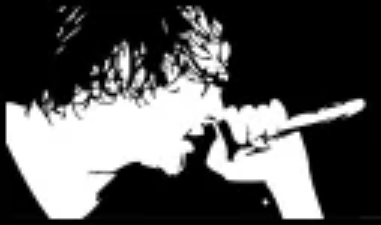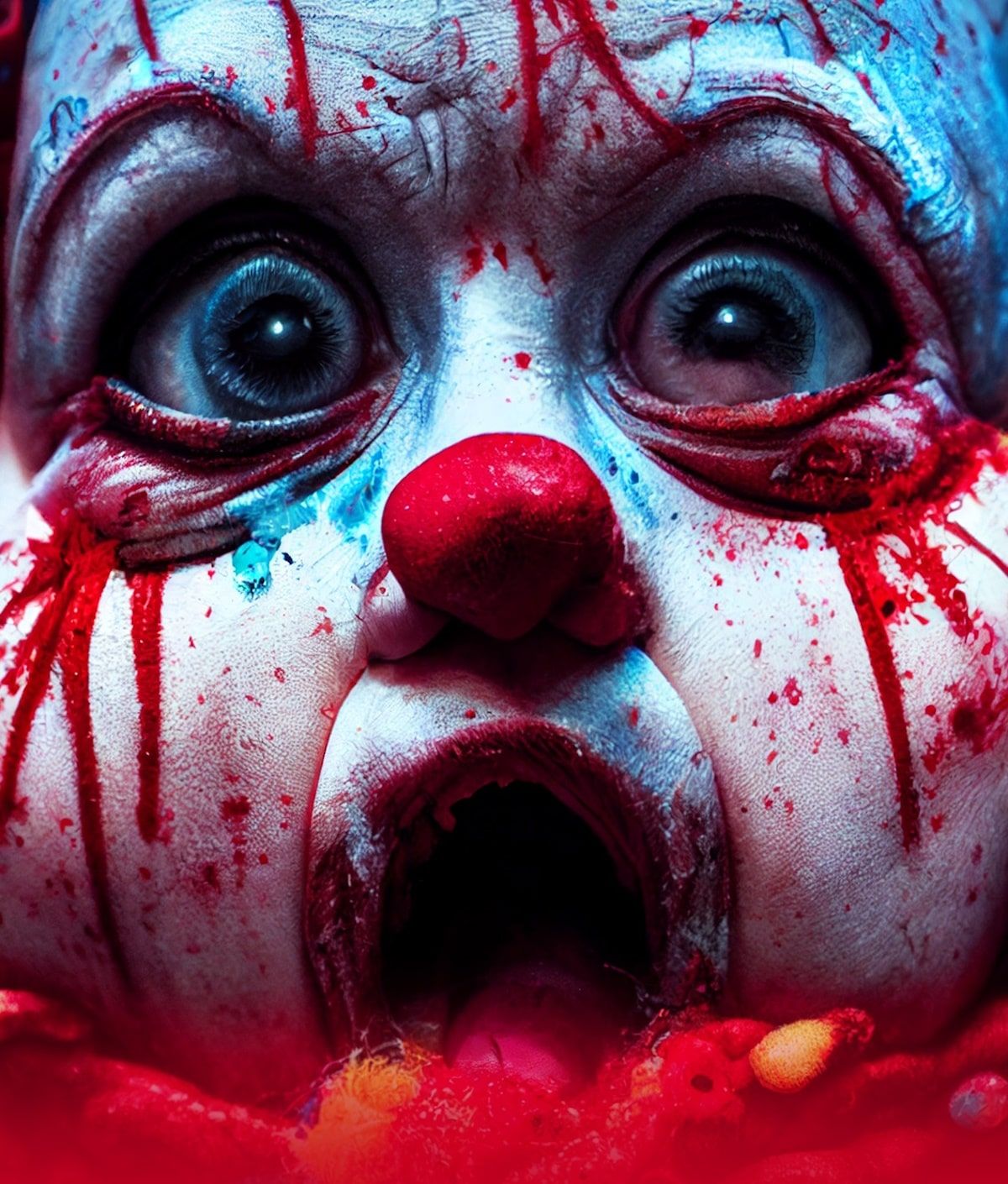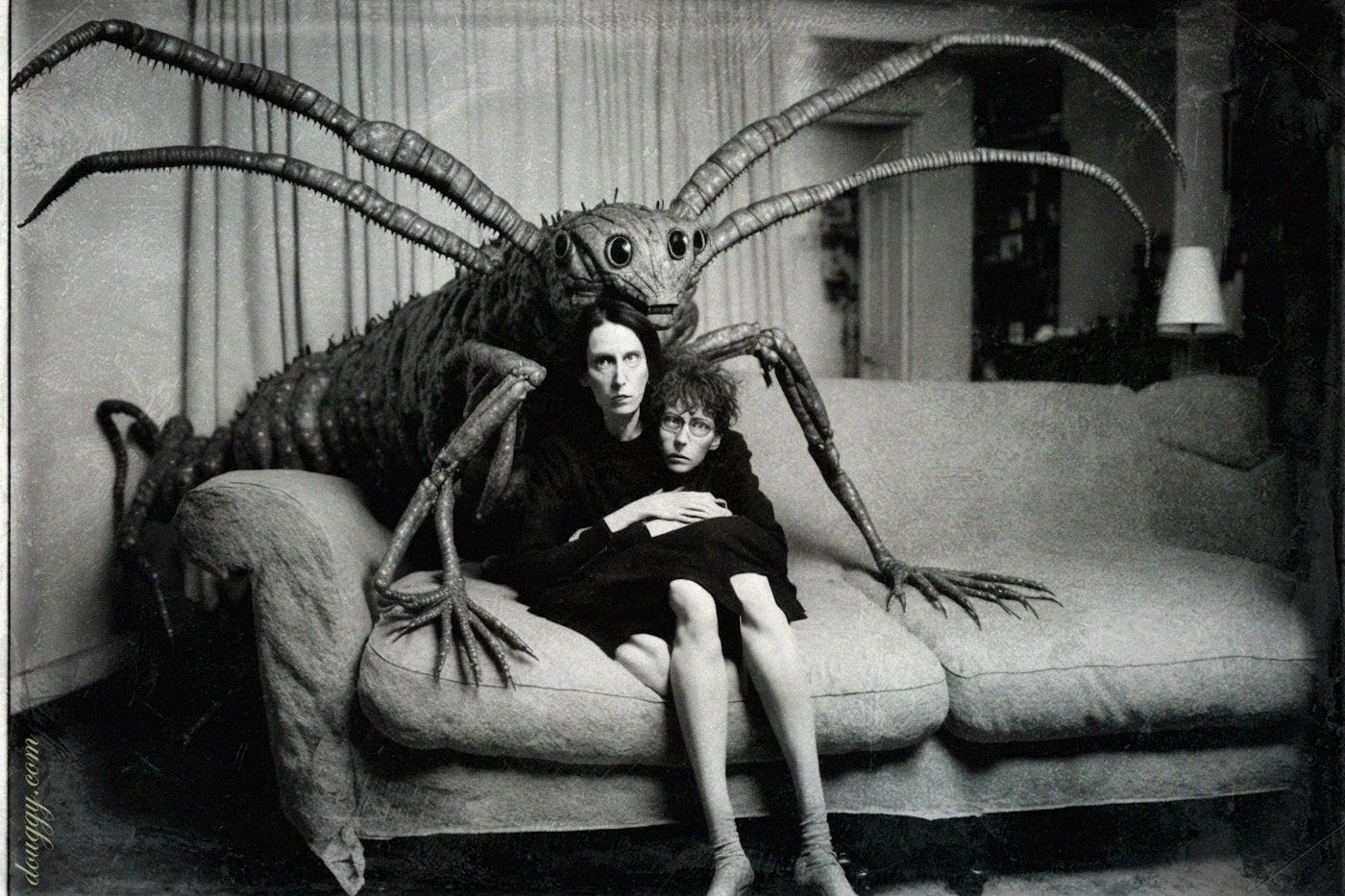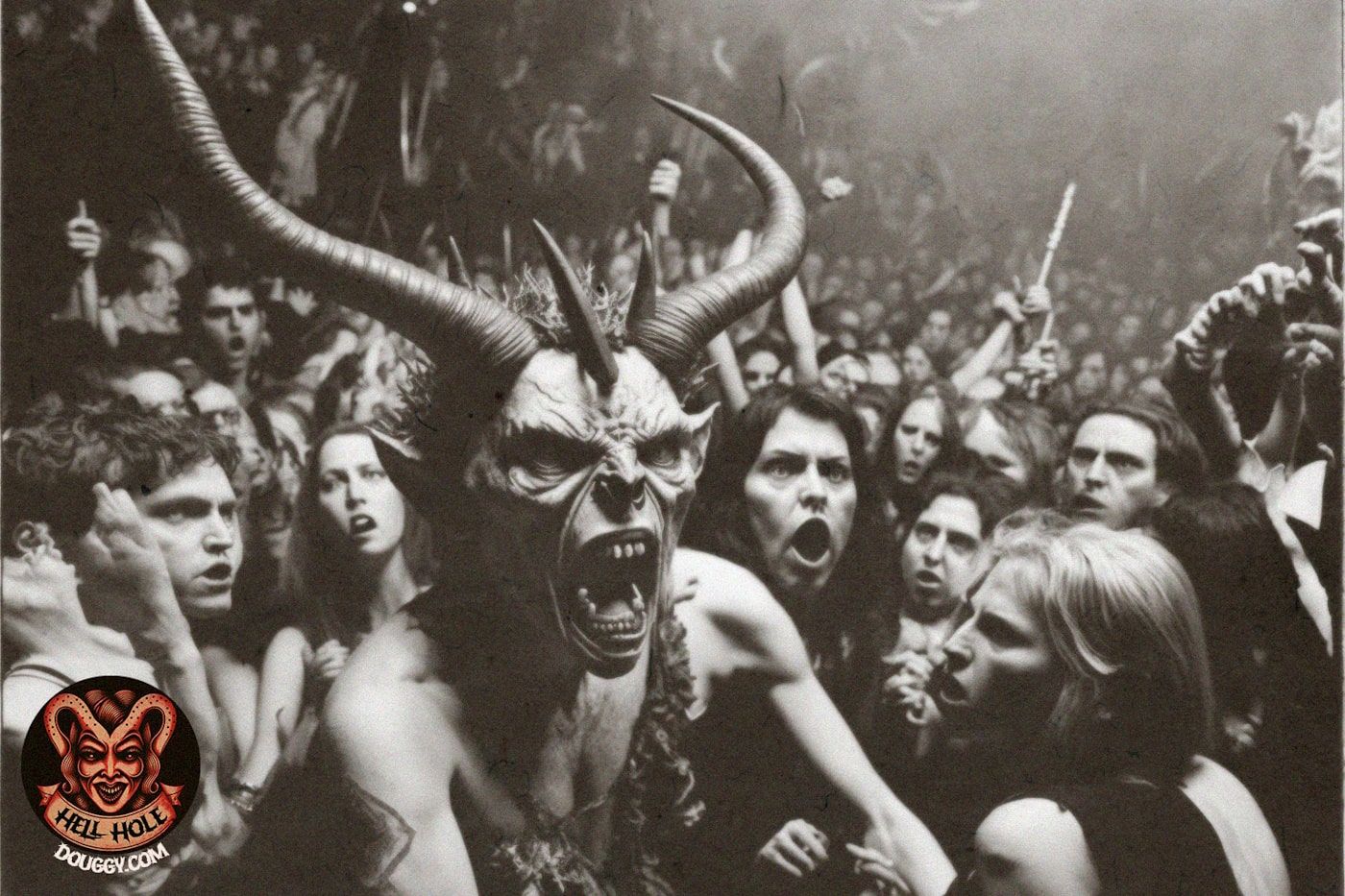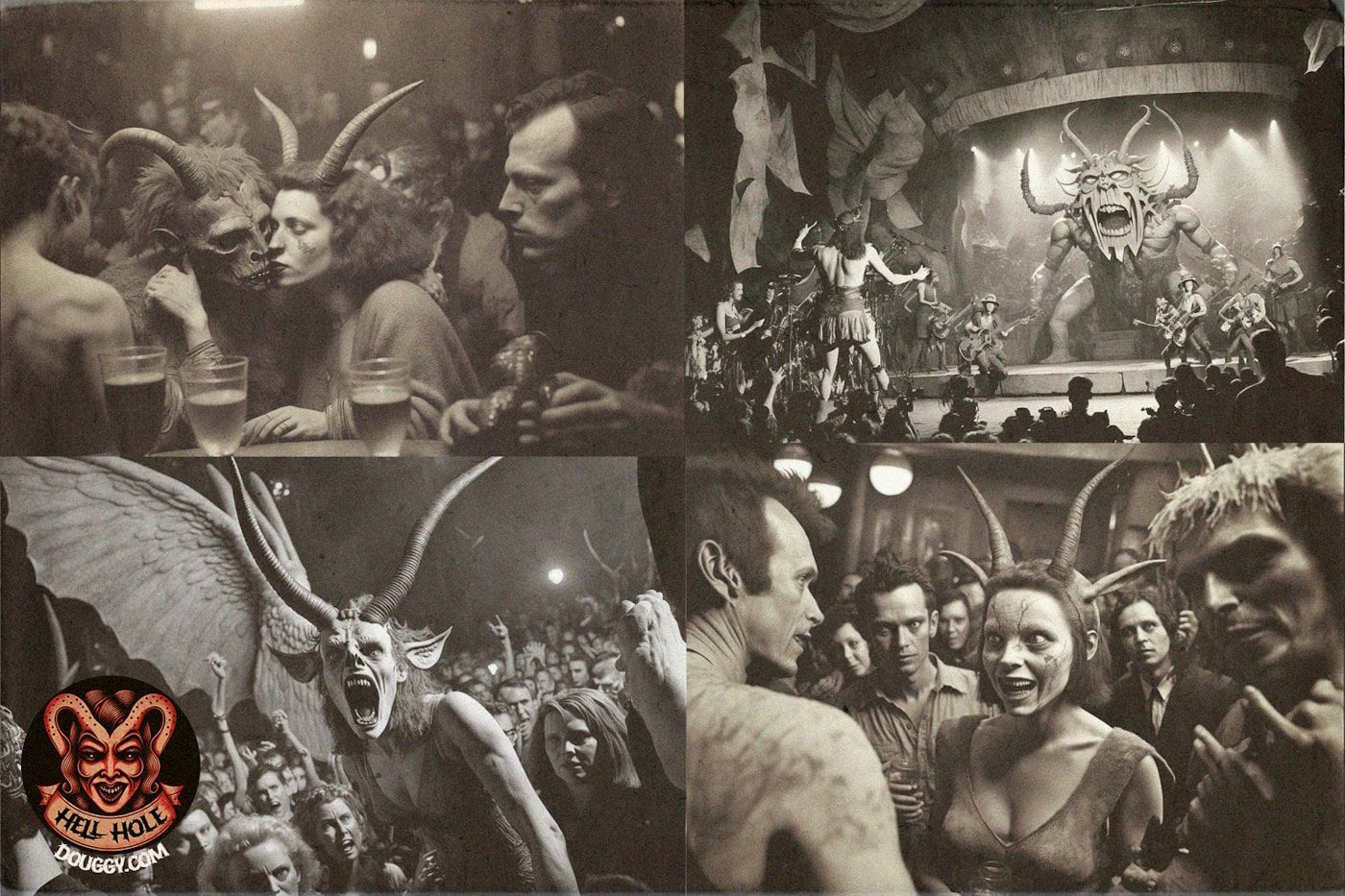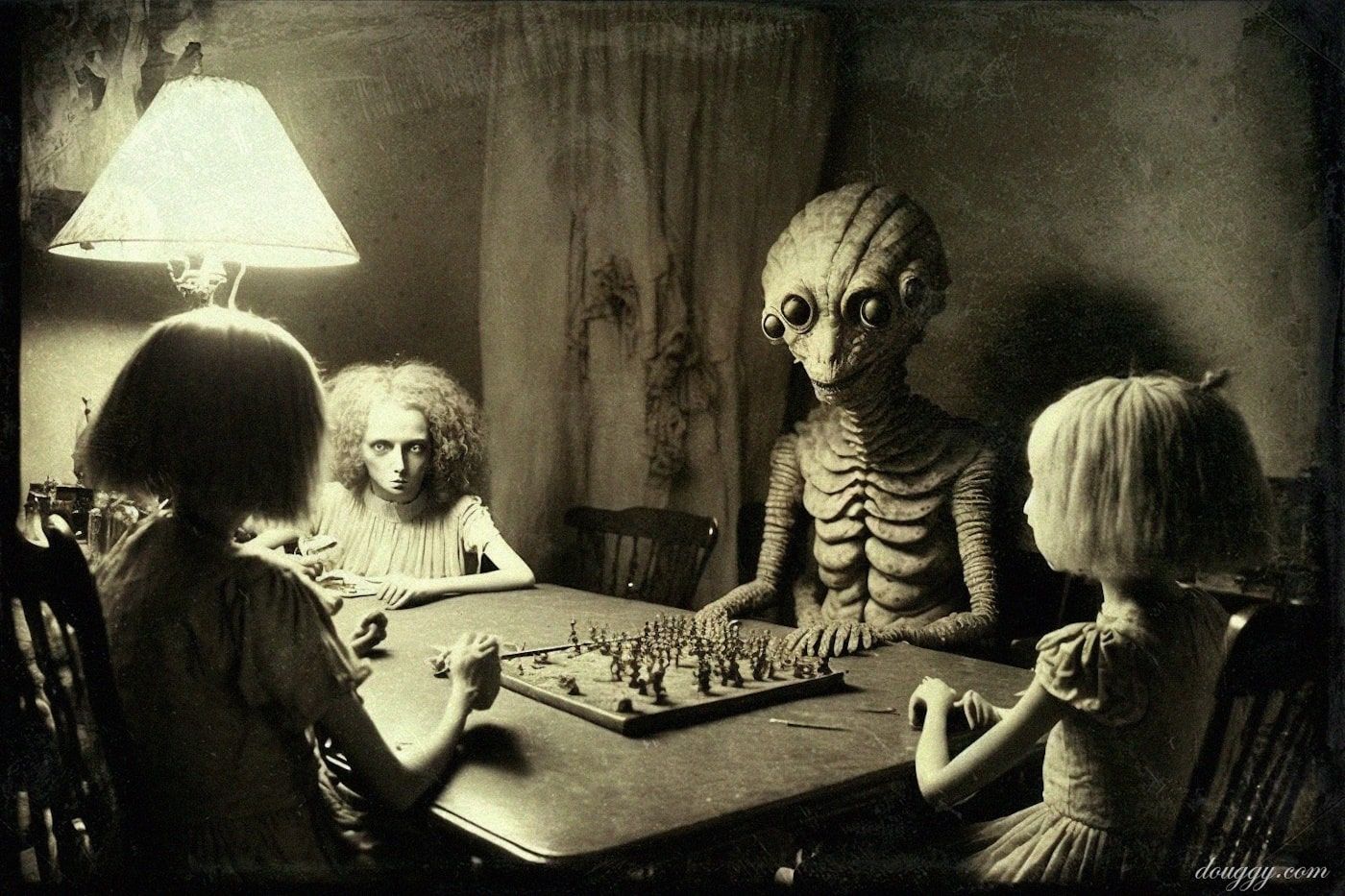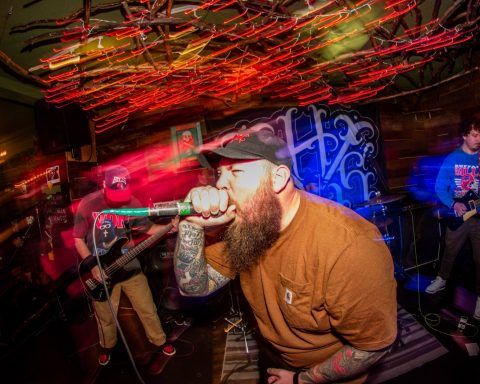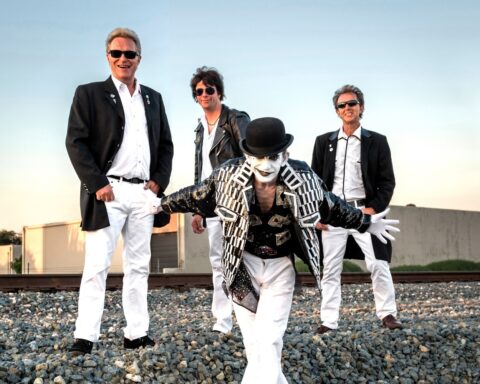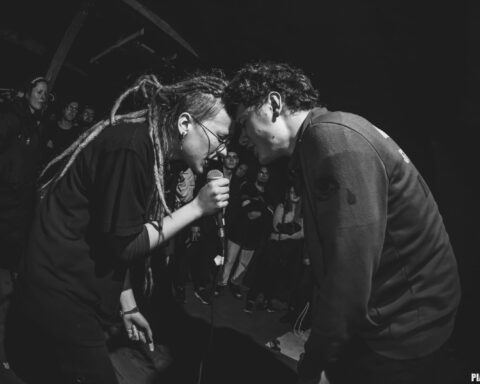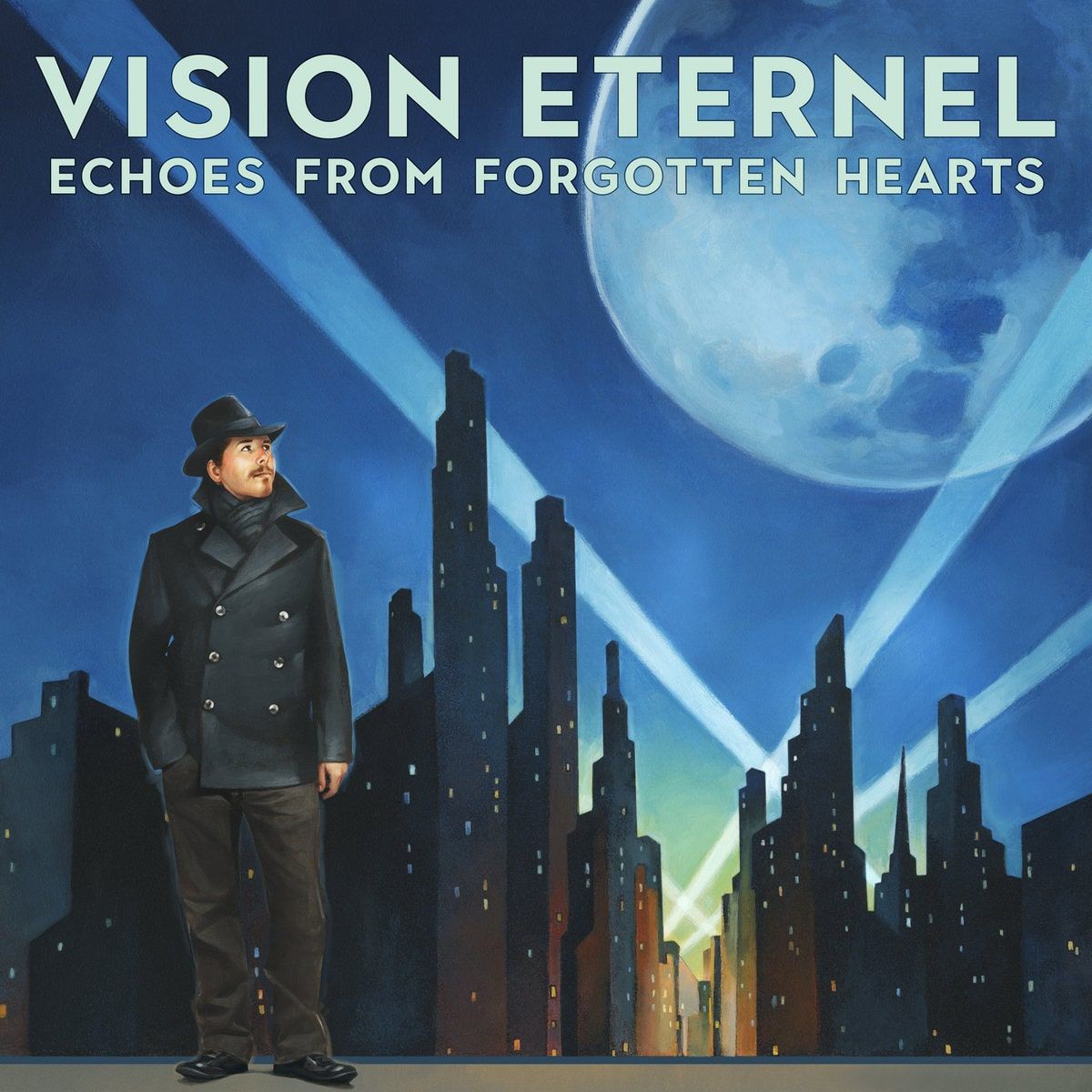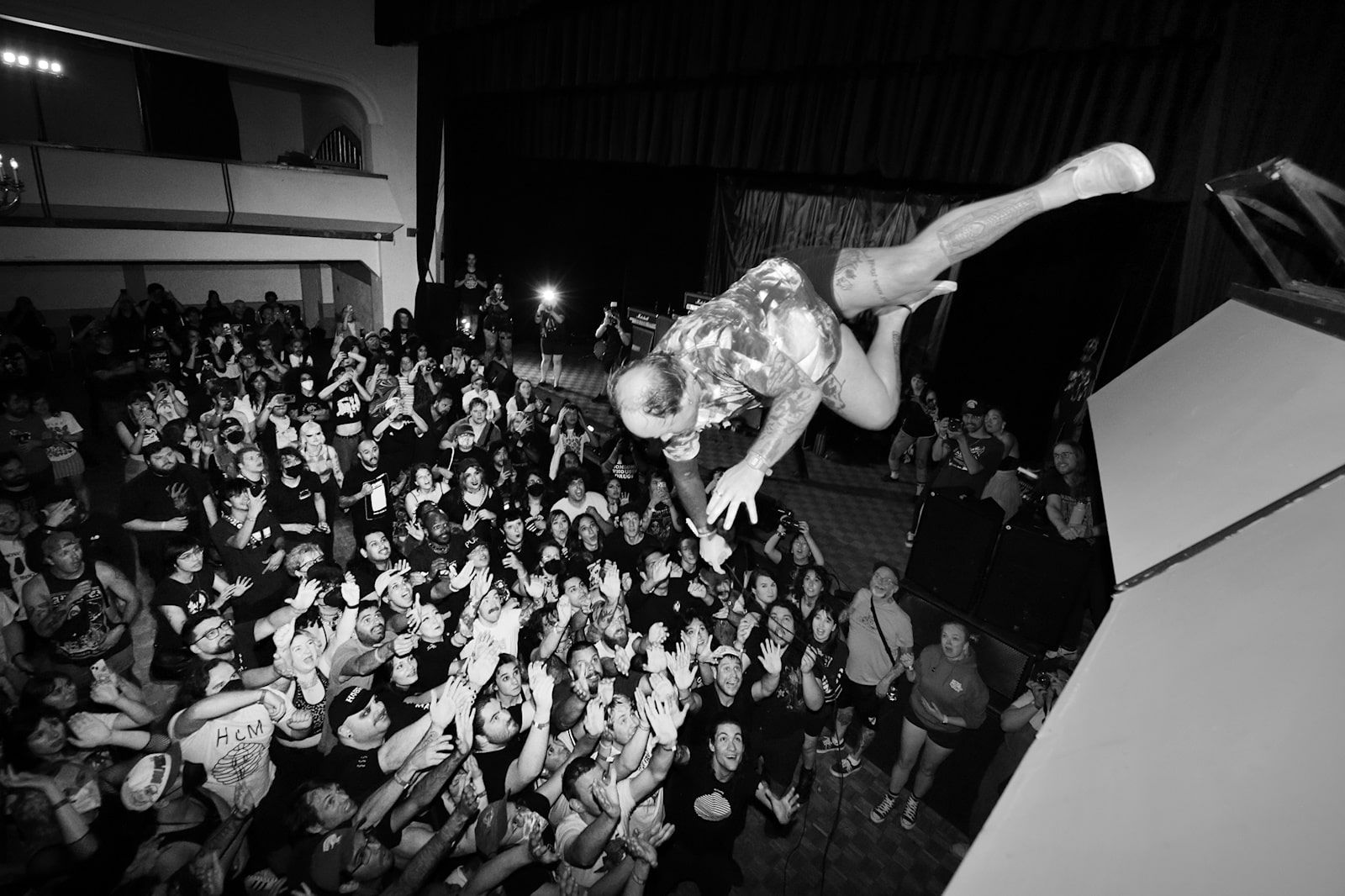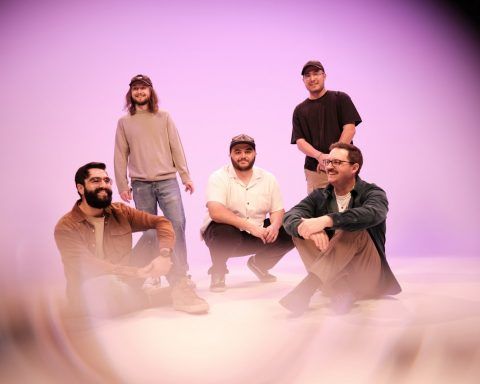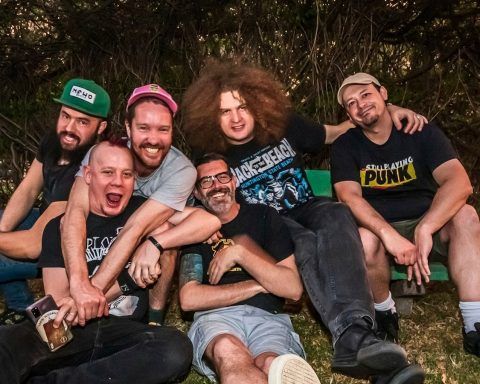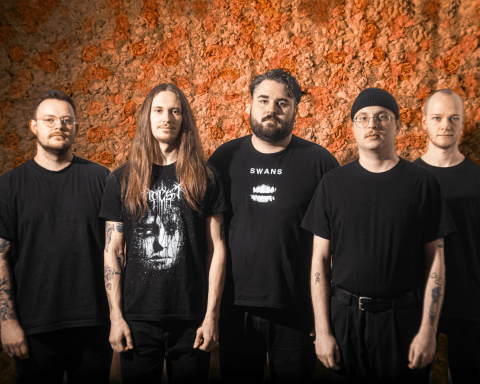Beneath the superficial veneer of our digital epoch, where the glossy and the sanitized reign supreme, lies a subterranean streak of artistic rebellion—a pulsing, twisted cord of creativity personified by Douggy Pledger. Pledger, a London-based maven of the macabre, harnesses the erratic and the eerie, melding humor with horror, to yield art that jolts the complacent eye.
Pledger’s work, a phantasmagoria of the grotesque and the ludicrous, is no mere accident of talent. This alchemist of the absurd cut his teeth in a familial forge of artistry—shaped by a father who breathed life into animals on canvas and a grandfather whose photographs captured more than mere moments.
Yet, it was the unhinged vistas of AI-generated art that became Pledger’s crucible, allowing him to concoct over 36,000 images in a frenetic three-month marathon of creation.
His inaugural tome, “To Hell with A.I.,” beckons readers into a realm where cyborg snowmen and 17th-century peasant body horrors conspire with the strange and the sinister. A collection that Heavy Music Artwork’s Alex Milazzo—drawn to Pledger’s peculiar magazine covers—deemed worthy of publication. It’s a volume that eschews the conventional, preferring instead to dance with demons in the details.
The follow-up book release “Wrong in the Head,” offered a mélange of short narratives and jest, all illustrated with Pledger’s AI-assisted hand. Here, the fusion of his penned wit with visual lunacy delivered a tome that’s as unsettling as it is uproarious.
In our discourse with Pledger (read the full interview below), he laid bare the creative sinews that bind his oeuvre. The man is an eclectic—drawing from a well of absurdity and alarm, he crafts his compositions with a deftness that belies the lunatic fringe his subjects often inhabit. He speaks not of lofty artistic ambitions but of a more grounded endeavor; to prod, to provoke, to tickle the macabre with a feather of folly.
His technique is an anarchic symphony of trials, errors, and serendipitous successes—a relentless pursuit of the never-before-seen through the lens of AI. He divulges tales of prompts twisted by single words into kaleidoscopic shifts in narrative and tone, of Photoshop not as a tool but as an extension of his own chaotic vision.
In Pledger’s universe, originality sprouts from the fertile soil of randomness, watered by a deluge of unbounded experimentation.
Yet, for all the digital dalliance, Pledger remains firmly rooted in the tactile joy of traditional art.
AI, for him, is less a paradigm shift than a convenient ally—a means to distill fleeting hours into lasting expressions.
His creative spirit, fed by a familial legacy steeped in the visual arts, refuses to be caged by the binary bounds of algorithms.
As the AI art landscape burgeons, teetering on the precipice of cliché, Pledger’s work remains defiantly individual.
It’s not the allure of AI that captivates him but the potential for narrative—the stories yet untold, the visuals yet unseen. His is a constant creative ferment, unbothered by the trends that ripple through the art world with the regularity of the tides.
Douggy Pledger’s journey is a testament to the enduring nature of human creativity amid the onslaught of technological advancement.
His is a siren call to those who stand at the crossroads of art and AI, a reminder that the soul of creation lies not in the tool but in the hand that wields it.
Ladies and gentlemen, we give you: the one and only, Douggy Pledger!
In your latest book, ‘Wrong in the Head’, you’ve combined AI-generated imagery with your writing. Can you share the moment of inspiration that led to this fusion of visual and written art?
This is something I’ve been doing since childhood. Illustrating comics and stories that I’ve written. Also used to cut pictures out of magazines and newspapers and make up stories, fake adverts, weird magazines and film posters.
Then later on down the line in the late 90s, with the help of Photoshop.
So it was only natural to use AI as another way of doing the same really. Yet with AI you can get the imagery you need very quickly rather than having to spend all day hunting for stuff, or just having to fall back on what you can find.
Sometimes you’re forced to work harder imaginatively with those limitations though.
Your art style marries the macabre with humor in a super unique way. How do you strike a balance between these seemingly contrasting elements in your work?
I always try and put in equal measures of stupidity and horror.
Growing up with things like Garbage Pail kids, trashy horror films, Mad magazine and wonky kids shows and comedies, all played a part I’m sure.
Never set out to make anything truly depraved or nasty, for the sake of it. That would almost be too easy.
There’s humour to be found in almost everything, so I try to squeeze it in as much as I can.
Could you delve into the specific techniques you use when creating with AI? Are there any unique methods or processes you’ve discovered that set your work apart?
I’m always trying to get results I’ve never seen before, be it a certain style or look.
That comes with a LOT of experimentation.
Using different camera types, dates, themes and a lot of shuffling of words in different order, adding words, writing in different languages etc.
Getting a good prompt then adding one word like ‘tron’, which sends it into a different direction.
Once you have a prompt that’s working well, you can change one or two descriptive words, that will change the scene and action but will keep the results with that same set and world.
Then using the results to build something up in Photoshop, whether it’s a little story or just a spoof magazine cover.
Adding that extra layer, even if it’s just a bit of colour correction and grain, might give it a slightly different appearance to whatever the current AI look is.
I certainly wouldn’t be blowing my own trumpet and saying I’m set apart from anyone else, not in a million years. There’s a ton of people doing some really brilliant work right now. Always seeing things and thinking – damn it, wish I’d thought of that. I’ve never tried to do anything in anyone else’s style, nor used it to mimic an artist. That to me seems entirely pointless.
View this post on Instagram
In terms of just quickly creating an image and sharing out the raw output though, I try not to do that. I did that a lot at the start of Midjourney when there wasn’t much of it about. Nobody knew what it was. Which felt like some type of sorcery.
But all you’re really doing there is showing off what the programs can do, rather than trying to put your own real touch on it. And we all know what it’s capable of doing by now. The magic of it all has waned a bit I feel, which played a huge part of its appeal.
View this post on Instagram
What challenges did you face while adapting your traditionally hand-drawn style to AI-generated art, and how did you overcome them?
I never tried to adapt one thing to the other. Just started using it because it was new and all quite fascinating.
I’ll always favor traditional art over AI and hand drawing or painting something, for me, will always be the prefered option.
AI is fun because it’s so quick. Having a family and full time job means my free time is precious.
View this post on Instagram
So making an AI video or comic can be turned around quite quickly whereas doing this traditionally would take a lot of time. I may only have an hour or so in the evenings and most of that would be eaten up in just tidying up, if I started getting all my paints out.
The last big hand drawn illustration I did took me 8 weeks to finish, and nobody sees it unless they come visit, as it’s too big to take anywhere.
So for me, it’s weighing up what time I have. Most of my ideas are pretty silly anyway, so AI is perfect for that.
Spending days drawing a cartoon for what is ultimately a one note joke can sometimes take the fun out of it, and I’ll give up.
View this post on Instagram
Your journey with AI art began recently. How do you see this technology evolving, and what role do you envision playing in its evolution?
Well, I started playing around with Midjourney in February 2022, so it has been two years now. It’ll keep getting better and better like it has been. I prefer playing around with the video more than anything now, so that’s always exciting to see improvements in there. And with each improvement comes more ideas on what you can do next with it. Ideas you couldn’t have done 6 months ago are now possible.
Many of your AI pieces carry a distinctively dark, Lovecraftian aesthetic. What draws you to this particular theme?
It’s great seeing what you’ve never seen before, especially when it’s really wonky and dream-like.
I would have no interest whatsoever in using AI to make something straight.
You mentioned the potential for AI art to become repetitive. How do you maintain originality in your creations in a field that’s rapidly growing?
Just trying to come up with good ideas and stories. Same with any artform. You never really know what will click with an audience though. I’ve given up trying to crack that one. Doing something that ties into a popular IP is an easy win, like Star Wars or Disney etc, which I’ve done a few of. But it sometimes feels like a bit of a cop out. Rather try and come out with something original. Easier said than done.
Your family background is rich in artistic influence. How have these familial roots shaped your approach to art, especially in your transition to AI?
My dad is a wildlife artist (Maurice Pledger) and my wife draws and paints every day (Caroline Harris) so there’s always something going on.
Through my dad with his art, my grandad with his photography and film developing I’ve always been heavily into both from an early age.
Over the years I’ve had a go in lots of different areas. Puppetry, film making, music.. with AI it just felt like another thing to have a go at. A phase that’s maybe outstayed its welcome.
I’m in the middle of drawing some designs for a toy line and writing a few scripts. So I always try keep myself busy with a mix of things. Keeps me off the streets.
View this post on Instagram
The idea of creating ‘something else’ using AI-generated images is fascinating. Could you elaborate on your future plans or projects that involve this concept?
Ideas can fall into place at any given time. So I’ll just keep going and if the idea warrants a silly video or story using AI then I’ll do that. The video developments interest me the most.
Currently working on another short film and the idea of doing a feature film is also playing on my mind. The trouble with that though is how fast this is all developing. I could start something today and within a few months, would have to redo everything. Impossible to keep up with it all.
You’ve had a long journey in the world of art. What advice would you give to young artists who are just starting out, especially in the realm of AI art?
AI is a fun toy to muck about with. I wouldn’t necessarily advise anyone to use it in terms of a short cut to becoming an “artist”.
Using it as way of generating images to then use elsewhere or within an original piece is probably a better way to play it.
Certainly wouldn’t be the first thing I’d advise anyone to use who’s starting out. Unless I’m being commissioned to do something, I usually only make things for the fun of it.
Whether it’s drawing, video editing, writing, filming, sculpting. Just a matter of trying different things and seeing what you enjoy. I think people generally find their feet when it comes to making and creating things without any persuading.
I was never trained in anything, just used to copy cartoons from comics and pausing videos. I was never really given any advice, more encouragement I guess. That what I was doing wasn’t a waste of time. You slowly find your voice and style over time, and through a ton of practice and influence.
Given the rapid advancements in AI, where do you see the future of this technology in relation to art? Do you anticipate any major shifts in how art is created or perceived?
As it’s something that anyone can try their hand at, it’s fun and exciting. People will eventually tire of it though I’m sure. As more and more of it floods the market and our social feeds, it’ll probably make actual artwork more appreciated and will certainly stand out a lot more.
Hope so. I’m not really the one to say though.
I personally would stop to look at an actual painting rather than 50 new AI images of the pope riding a unicorn, or whatever the latest craze is.
There’s a growing concern that reliance on AI tools might diminish human creativity, leading to a culture of convenience over original thought. What are your thoughts on this? Do you think AI might make artists ‘lazy’ in a sense, or does it open up new avenues for creativity?
Great artwork always takes a lot of time and thought. Any artist worth their salt will continue to put the effort and energy into making great work.
Trends in styles and techniques are always moving around. I think most people can see through the lazier pieces in any given art.
On a more personal note, outside of your art, what else occupies your time? Are there other passions or projects that you’re involved in?
I write a lot with my mate Dominic Hailstone and hope to get something off the ground soon.
And continuing to make silly videos with my friend Mark Nicholson (osymyso).
Outside of all this I work for BBC studios in London with a truly brilliant team of creatives and artists. Currently knee deep in editing a bunch of promos for a new TV show.
How do you envision the relationship between human artists and AI evolving in the coming years? Do you foresee a collaborative future or a competitive one?
People have been using computers to aid their artwork for some time now, so I don’t see it as anything new in that sense.
Photoshop is forever bringing in new plugins and versions which help cut corners.
It’s hard to know where to draw the line. I guess things just become easier and easier as time goes on, but you will always need the people with visions, styles and ideas to make something that breaks the mold and draws human interest.
Whenever I watch a film that’s too CG heavy I tend to lose interest pretty quickly.
After Jurassic Park came out I wanted to see every film that had CGI in it, regardless of how crap the film was, because the spectacle was so new and magical.
After time though you realise it’s just a technique and aside from the occasional jump in quality, it’s just that.
With AI I tend to get excited with every new progression but then that fades pretty quick, until the next update. Better to have a good strong idea for something and if AI is able to support that, then great. Rather than relying on it solely because it looks cool.
Given the potential for AI to transform the art world, do you have any concerns about the preservation of traditional artistic skills and techniques?
I think anyone who wants to pick up a pencil or brush will do. My daughters draw and paint the whole time. It’s in all creative types to do that. All the artists I know were all self taught, learning from their own mistakes and putting in a ton of practice.
I don’t think there’s any worry of that disappearing.
Subscribe to our Newsletter for featured stories alerts and more:
Want to keep the beat going?
IDIOTEQ is a one-man DIY operation, tirelessly spotlighting the local cultural scenes and independent bands that often go unreported elsewhere. Born in the early 00s, this platform has been committed to giving hard-working artists the high-quality coverage they truly deserve.
No ads, no distractions—just pure inspiration and a genuine focus on independent artists and their stories.
Please consider helping keep IDIOTEQ ad-free and in tune with the indie scene by donating today.
DONATE via PayPal 𝗈𝗋 SUPPORT via Patreon
100% of the funds collected go toward maintaining and improving this magazine. Every contribution, however big or small, is super valuable.
Your support ensures that we continue to be a place where you can discover, learn, and get inspired, without any advertising noise. Thank you for being a part of this musical journey.

